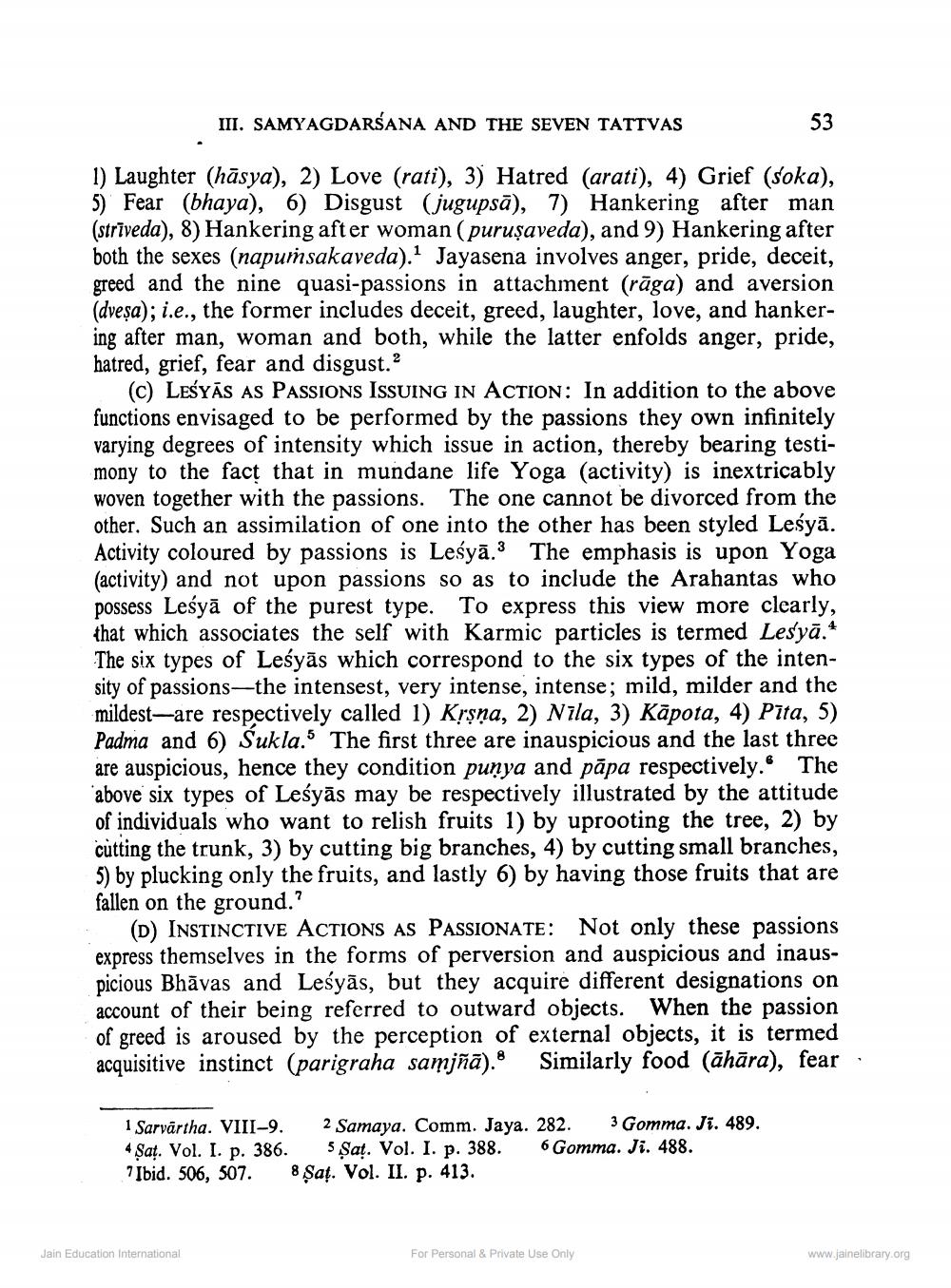________________
III. SAMYAGDARSANA AND THE SEVEN TATTVAS
53
1) Laughter (hāsya), 2) Love (rati), 3) Hatred (arati), 4) Grief (soka), 5) Fear (bhaya), 6) Disgust (jugupsā), 7) Hankering after man (strīveda), 8) Hankering after woman (puruṣaveda), and 9) Hankering after both the sexes (napursakaveda).' Jayasena involves anger, pride, deceit, greed and the nine quasi-passions in attachment (rāga) and aversion (dveşa); i.e., the former includes deceit, greed, laughter, love, and hankering after man, woman and both, while the latter enfolds anger, pride, hatred, grief, fear and disgust.
(c) LESYĀS AS PASSIONS ISSUING IN ACTION: In addition to the above functions envisaged to be performed by the passions they own infinitely varying degrees of intensity which issue in action, thereby bearing testimony to the fact that in mundane life Yoga (activity) is inextricably woven together with the passions. The one cannot be divorced from the other. Such an assimilation of one into the other has been styled Leśyā. Activity coloured by passions is Leśyā.3 The emphasis is upon Yoga (activity) and not upon passions so as to include the Arahantas who possess Leśyā of the purest type. To express this view more clearly, that which associates the self with Karmic particles is termed Lesyā.* The six types of Leśyās which correspond to the six types of the intensity of passions—the intensest, very intense, intense; mild, milder and the mildest-are respectively called 1) Krsna, 2) Nīla, 3) Kāpota, 4) Pīta, 5) Padma and 6) Sukla.5 The first three are inauspicious and the last three are auspicious, hence they condition punya and pāpa respectively. The above six types of Leśyās may be respectively illustrated by the attitude of individuals who want to relish fruits 1) by uprooting the tree, 2) by cutting the trunk, 3) by cutting big branches, 4) by cutting small branches, 5) by plucking only the fruits, and lastly 6) by having those fruits that are fallen on the ground.?
(D) INSTINCTIVE ACTIONS AS PASSIONATE: Not only these passions express themselves in the forms of perversion and auspicious and inauspicious Bhāvas and Leśyās, but they acquire different designations on account of their being referred to outward objects. When the passion of greed is aroused by the perception of external objects, it is termed acquisitive instinct (parigraha samjñā). Similarly food (āhāra), fear.
1 Sarvartha. VIII-9. 2Samaya. Comm. Jaya. 282. 3 Gomma. Ji. 489. 4 $ať. Vol. I. p. 386. Sat. Vol. I. p. 388. Gomma. Ji. 488. 7 Ibid. 506, 507. 8 Şaț. Vol. II. p. 413.
Jain Education International
For Personal & Private Use Only
www.jainelibrary.org




